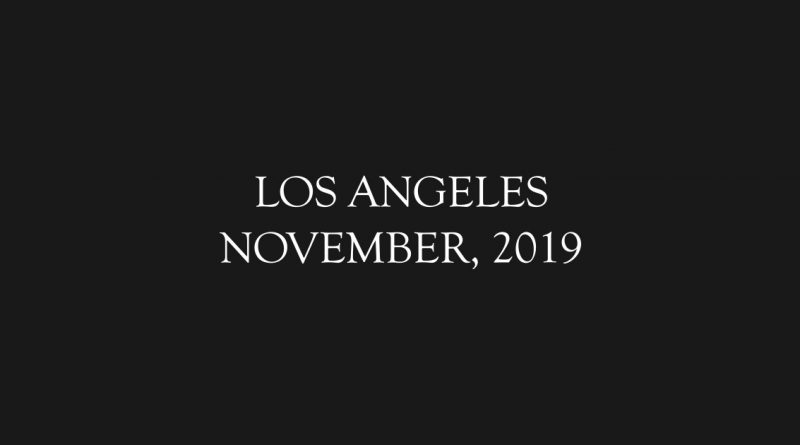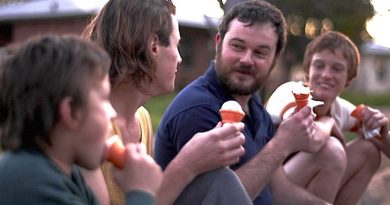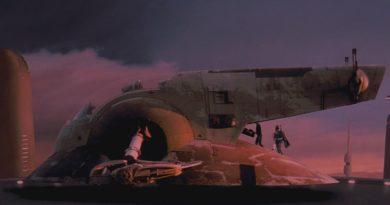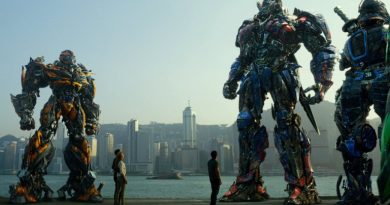Los Angeles. November, 2019: A Look Back at Bladerunner
(contains spoilers for Bladerunner)
The future has arrived.
Anyone who knows me well, knows that I think Bladerunner is one of the greatest films ever made. Easily in the all-time Top 5. I love it so much I relish any chance to talk about it in a rambling and disjointed way, so given the timing, why not now?
Updating the Software
Bladerunner has seen multiple revisions since it’s inauspicious 1981 theatrical run. With each update has come a number of changes, both major and minor, but it is fairly safe and non-controversial to say that the Final Cut is still the best version (they finally fixed the fucking sky). While I will always have a soft spot for Harrison Ford’s half-assed voice over from the theatrical cut and its many golden one-liners (sushi, that’s what my wife used to call me, cold fish) the Final Cut is the best in every way. It is also true that the many cuts and updates of Bladerunner have laid the groundwork for the multitude of unnecessary director’s cuts, extended editions, and half-finished films to come out in the intervening years, however the attempts to re-edit the film are among the few examples of honest and well-intended post-release revisionism, with the intent to give the “truest” experience of the movie. That said, when I discuss the film for the rest of this article, I will be referring to the Final Cut.
Impossible to Replicate
So, what makes Bladerunner so great? Well, in short, everything. A technical marvel, it’s safe to say Bladerunner’s visual style and production design is the most imitated in cinematic history. Its vision of the future so resonant and infectious, that it has left a lasting imprint on the global consciousness. The special effects: mostly practical makeup, miniatures, and optical printing, still hold up today better than most blockbusters from 5 years ago. Its score is iconic as well.
Given how impactful the movie was there are a litany of imitators, yet none have ever come close to capturing Bladerunner’s magic in spite of all their efforts. Why? I think it is because most look to imitate the aesthetics: the dark, neon, rainy world, or the human vs robot stuff window dressing, but nothing else about it. All the elements of Bladerunner are synergistic. The world informs the characters, the characters inform the cinematic techniques, the cinematic techniques inform the themes, and the themes inform the world. All elements flow into and out of one another. It is complete and air-tight, and if you try to isolate one element without the others, it loses some of its impact.
For starters, the cinematic and production techniques of the movie seem to be forgotten to modern filmmakers, which is a shame. Every shot in Bladerunner is rich with visual and aural information, stuffed with things to look at. Harsh, multicolored lighting filters through shades and spinning fans. Thick smoke rises omnipresent from every street corner. Debris blows about in the wind and oppressive rain. The streets are crawling with people (real people, actual extras) dressed in setting appropriate costume. There is the constant white noise of conversation, cars, buses, rain, and industrial noise. Watch any major movie today and it will seem empty by comparison, sterile and lifeless next to a film that is so full of life and movement.
And life is what the film is ultimately about. The greatest allure of Bladerunner is not in its visuals or cinematography (which are amazing) but in its story, characters, and ideas.
Ask people what the film is about and they will probably say it’s about “what it means to be human” and then go on about how we would tell humans apart from replicants. This, I think, is missing the point entirely. The ultimate question, “what does it mean to be human”, is better phrased as such: How are we supposed to live? How are we, human beings, supposed to go on and find purpose in our lives knowing that someday we will die and lose it all? That is the question that Bladerunner seeks to answer. That is the idea that drives everything that the movie is about, and it is the key question of our lives, the one we all seek the answer to more than any other.
The question drives all other aspects of the film. The story follows the dual journeys of detective/assassin Rick Deckard and his prey Roy Batty, two troubled men weighed down by the gravity of their many sins, as they try to transcend their past and the boundaries of their existence. Rick, figuratively, does so by finding a real emotional connection with Rachael, and Roy literally by trying to extend is artificially stunted lifespan. They both try, fail, and in a way succeed at these tasks. Rick doesn’t seem to be able to relate to other people and his attempts at connecting to Rachael are futile at first; he is cruel, then kind, then violent (to the point that a lot of people get turned off completely), but eventually the two reach a kind of understanding that has the chance to turn into something more. Roy exhausts every scientific possibility of extending his own life, only to fall into murderous despair, before saving Deckard’s life and in doing so, living on through Deckard as the keeper of his memory, the witness to his existence.
The characters are complicated, messy, morally compromised, and, most importantly, real. They are desperate in their search for meaning, for some way to transcend death, or at least make life more bearable. Their psychological interiors (dark, intense, confusing) are reflected onto the outside world with its similarly moody architecture, lighting, and weather. It is the sum of all these parts, the accumulation of every small detail and their seamless integration, that makes the whole film an historic and transcendent work of art. It is also what allows it to continue to be so enduring and inimitable.
Sequels and Such
Given what I’ve said it should come as no surprise that I was irritated to no end by the ill-conceived sequel Bladerunner 2049. The idea that a perfect work of art should have a sequel is an utterly insane notion, in and of itself. What’s next? Apocalypse Now 2: Electric Boogaloo? I was violently opposed to its existence from the beginning and the end result did nothing but further harden that opposition. The sequel is boring, overlong, limp, lifeless, and meaningless. It has plenty of pretty cinematography and some good performances and music, but that’s about it. Gone are the crowded streets, the smoke, the movement, the lights, and the life of the original. Now the world is cold and sterile. Gone are the complicated and fascinating characters. Now we have shallow types, standing in for people that we’re supposed to care about. We have an otherwise boring hero with one interesting personality trait (his love for a hologram), a pair of villains with all the charisma and humanity of a TI-89, and a Rick Deckard that seems to only be here for a quick paycheck. Much of what made the original interesting and beautiful has been retconned or replaced. Tyrell is replaced by Jared Leto as a new godlike creator figure who is one of the worst written and worst performed characters I’ve ever seen. Rachael and her connection to Deckard are gone, retconned away as part of some lame replicants giving birth storyline. And, worst of all, gone are the grand and ambitious questions about life. The filmmakers seemed to have confused the meaning of the question “What does it mean to be human?” They seem entirely too focused on the ambiguity in telling the difference between humans and human-like machines, rather than exploring the meaning of human experience in any meaningful way.
If Bladerunner is the ocean, 2049 is a puddle, muddied so as to appear deep.
Where Are We Now?
As with any movie that takes place in the future, it is always interesting to see how true-to-life it is when that future finally arrives. While the film’s prediction of environmental calamity has yet to come to its full fruition, it may come true quite soon, just as Back to the Future 2 predicted the Cubs winning the World Series just a year early. We also don’t have flying cars or fancy ziggurats, but we are trending (at least in LA and the surrounding counties) toward the oppressive, overcrowded sprawl that defines the first film (but not the second, because crowds are a lost art in movies). Artificial life is nowhere near the complexity of Roy Batty, more human than human, but it is on its way. We are building robots for manual labor and for sex while also building mechanical minds to do our thinking for us. They are crude now, but it is not inconceivable to think that they will cross the uncanny valley within our lifetimes.
One of the more interesting parallels is the rule of the technological elite. There is no real political infrastructure. There are laws, to some degree, and police who enforce them, but there is no indication of any political leader. Eldon Tyrell, the massively powerful tech CEO, instead occupies the highest position of the societal hierarchy. He flaunts the law at will, employing illegal replicants to further his experiments, and generally ignores the decaying world around him, living atop an almost literal ivory tower. He views life as a poetic game. When confronted with real world problems of suffering, life, and death, he is coolly detached, as if none of this is his concern. He ignores Roy Batty’s suffering and fear about dying, calmly saying that nothing can be done, only becoming uncomfortable when he catches on that Roy is preparing to kill him. This is disturbingly similar to how ultra-wealthy of our time behave. Many of them are completely unaware or unconcerned with the problems of the world, focusing instead on the protection and expansion of their wealth, their experiments, the advancement of their technologies, and the extension of their own lives. They treat the law as a suggestion, only to be obeyed by lesser people. The laws of man do not apply to gods.
Another interesting point is the presence of Japanese imagery in the film. The 1980s featured a great deal of paranoia regarding Japan’s then booming economy and the possibility of the “Japanification” of the United States and the rest of the world as Japan became the preeminent global superpower. This is reflected in the film’s production design with the many logos of Japanese companies and Japanese-style advertisements. In the world of Bladerunner, it is presumed that Japan is now the #1 global superpower. It is common that people, and nations, who have a great deal of power and abuse it, fear someone else gaining power that they might similarly abuse it. In the real world, our fears about Japan were unfounded as their economy crashed in the 1990s and never recovered. However this fear has been revived in recent year with regards to China, America’s new threat for global dominance, and while Japan’s values are closely aligned with those of the free world, China is openly an enemy of free people everywhere.
One Final Cut
If being alive was a class you had to take in school, watching Bladerunner would be on the syllabus. It’s a work of extraordinary beauty, sophistication, and emotional resonance. It may be strange to say this given how much it has been copied, but there is truly nothing like it. If you’ve never seen it, see it as soon as you can, and if you have, see it again.
(Originally posted November 19, 2019)




